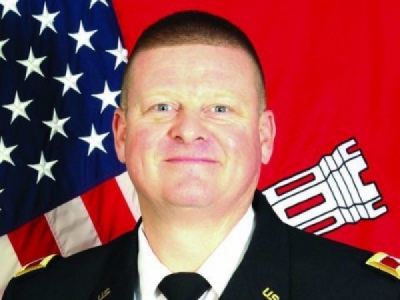
Posted on July 6, 2017
The U.S. Army Corps of Engineers St. Louis District welcomed a new commanding officer during a Change of Command ceremony Friday at the St. Louis City Center Hotel.
Col. Bryan K. Sizemore succeeded Col. Anthony P. Mitchell as District Engineer in the Change of Command ceremony, Maj. Gen. Michael C. Wehr, commander of the Corps’ Mississippi Valley Division and President of the Mississippi River Commission, presided over the event.
“Col. Anthony Mitchell has clearly left a positive and enduring legacy of contributions to the St. Louis District,” Wehr said in his remarks. “During his tenure, he excelled at leading the District to execute the full spectrum of its missions.”
Sizemore assumed duties as the 52nd Commander of the St. Louis District after serving as the G3 at the Maneuver Support Center of Excellence at Fort Leonard Wood in Missouri. He previously served as an Army Fellow at the Skowcroft Institute and the Bush School of Government at the Texas A and M University, commanded the 11th Engineer Battalion at Fort Benning, GA and served as the Chief of the Commander’s Initiatives Group at the Maneuver Center of Excellence, Fort Benning. Sizemore holds a Bachelor of Science Degree in Environmental Engineering at West Point, a Master’s of Science Degree in Engineering Management from the University of Missouri-Rolla, and a Master’s Degree of Military Arts and Sciences from the Marine Corps University in Quantico, Virginia.
“The St. Louis District encompasses a diverse set of missions in support of the region and nation,” Sizemore said. “With the district’s team of professionals and our partners throughout the region I am confident in what can accomplish together.”
The St. Louis District is strategically located at the crossroads of three major river systems: the Illinois, Mississippi and Missouri. The mission of the District is to manage the 300 mile Mississippi River watershed above the Ohio River by applying engineering, scientific, and other resources while preserving, restoring and enhancing the environment; and maintaining core competencies needed to respond to local and national emergencies and technical requirements.
Source: Shelbyville Daily Union





